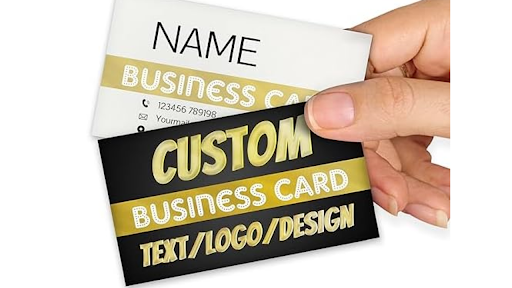Three Essential Facebook Advertising Strategies In and After 2021
With over 2.74 billion active users, Facebook is the biggest social media platform available to us. The purpose of Facebook isn’t just limited to connecting people from all parts of the world. It is also meant for businesses of all sizes to connect with their target audience. People tend to spend a minimum of 34 minutes per day on Facebook. Two-thirds of users are reported to visit a local business page every week.
People are looking for a business like yours on Facebook. Whether it is about getting assignment help or buying handmade products, most people resort to Facebook to get what they want. Here are the three most effective Facebook advertising strategies that will take your online business to a whole new level.
- Categorise your target audiences on Facebook
Advertising on Facebook means targeting your ads to three specific types of audiences- saved, custom and lookalike. Let’s see how you can create and identify each type of audience in your marketing campaign.
- Saved audiences– share specific behaviours, interests, locations, income levels, etc.
- Custom audiences- already familiar with your business and often includes the ones who have visited your website or interacted with your content.
- Lookalike audiences– share similar characteristics as your current group of paying customers.
You need to target all the different types of audiences to make the most of your Facebook advertising strategies. Here’s how you can use the audiences in a better way:
- Read your Facebook Audience Insights
You need to get hold of all the common traits of your target audience. Analyse your Facebook Audience Insights to construct a buyer persona relevant to your business. The buyer persona will help you know who your ideal customer is and what they are looking for. You can morph your messaging, targeting and ad content accordingly.
- Create custom audiences of people
Start sharing your ads with people who have already purchased from you or have added your products to the cart. Upload your email subscriber list to create a custom audience and send them the ads too.
Let’s say your target audience is students who are 15-18 years old. But, you end up sharing your ads with adolescents who are 25-30 years old. Would your ads serve their purpose if they aren’t presented to the right people? Every post, comment and ad you create on Facebook should cater to your target audience’s requirements.
- Keep a tab on your customers’ journeys
The customer’s journey refers to the experiences that a potential customer has before deciding to opt for a service or buy a product. Each customer has their own journey. Once you get the hang of the typical journey your target audience takes, it will be easier for you to show the right ads to the right people at the right time.
There are three phases in a customer’s journey:
- Awareness
This phase is when your target audience is experiencing the problems that your product or service promises to solve. They may or may not know about your brand yet at this stage. So, you need to spread the word about your brand to capture the attention of your target audience. Do not share any overtly promotional content ads. Rather, keep it simple and focus on educational content ads to show how your service can help those people.
- Consideration
At this stage, your target audience already knows their exact problem, and they want to make the right decision when it comes to solving their problems. This phase includes a lot of research to help them make an informed decision. So, you need to share newsletters, giveaways and other pieces of content that create engagement with your audience.
- Decision
By this stage, your potential customers know who you are, and they are also interested in your services. So, this is when you let them have a sneak peek into what you have to offer to them. Ads related to your products, welcome discounts, free shipping, etc., are the best content to persuade your potential customers to buy from you.
Let’s say you want people to use the word counter on your Facebook page. So, first, share educational content ads based on informative blog posts written on the benefits of your word counter. Capture their attention by showing how your tool will help your audience solve their problems. Once you grab their attention, it’s time to share instructions for how to use the word counter. That’s how you engage with your potential customers. Finally, after an additional three to five days, you post a flash sale offer where they can use the tool for free only for a limited time span.
- Choose the right type of ad
Now you know who your audience is and all the stages involved in their journey on Facebook. So, it’s time for you to choose the right type of ad objective and format. As mentioned earlier, there can be three objectives of your Facebook ad- awareness, consideration and conversions. Focus on each objective depending on what goal you want to achieve from the ad. For instance, let’s say you want to create awareness about your brand. So, your ad objective would be awareness, where you need to share only educational content about your brand to your target audience.
Different types of ad objectives include:
- Awareness ad type– brand awareness, local awareness and reach
- Consideration– traffic to your website, engagement, app installs, lead generation, event responses, offer claims, video views
- Conversions- action on your website, product catalogue sales and store visits
What about the formats of Facebook ads?
The format of your Facebook ads determines how your ad is presented on the platform. The different formats are:
- Videos– used for brand awareness and consideration campaigns.
- Photos- used for brand awareness, local awareness, reach, app installs, etc.
- Slideshows- used to tell a story about the brand.
- Carousels– used for lead generations, engagement, product catalogue sales, etc.
- Canvas– used for brand awareness and traffic.
- Dynamic product– used for product catalogue sales.
Identify what your objective is and choose the right type of ad accordingly. The right type of ad is like a window of opportunity to capture your target audience’s attention and make a solid positive impression. That means choosing the wrong ad format can divert your target audience to your competitor’s brand. You don’t want that. Do you?
Wrapping Up,
The world has noticed a strong digital transformation since the pandemic struck in 2020. Whether it’s apparel or medicines, people are more than enthusiastic about purchasing even the basic essentials online rather than shopping in a brick and mortar store. And Facebook is one of the most popular platforms to let your target audience know about your online business. However, you need strong advertising strategies to make sure you display your ads to the right people and at the right time. Good Luck.






